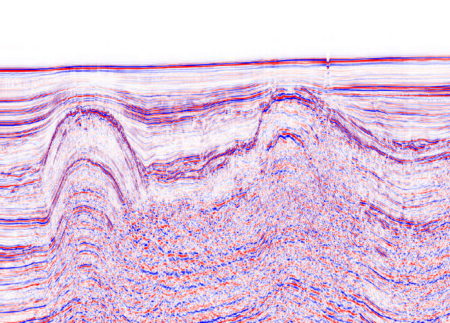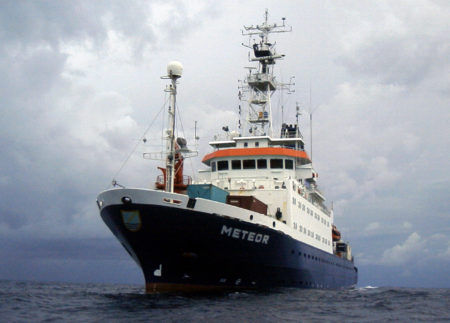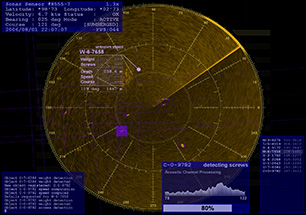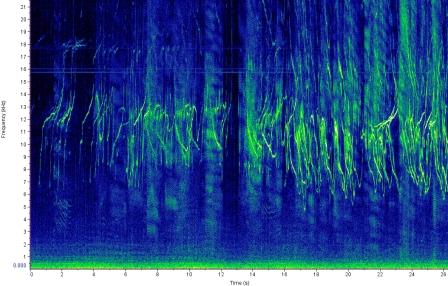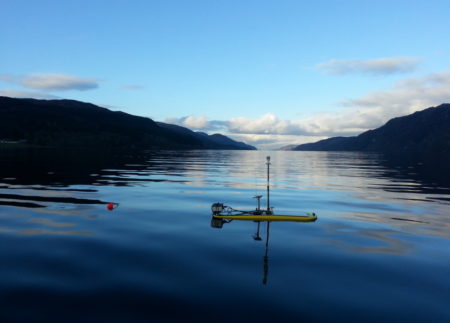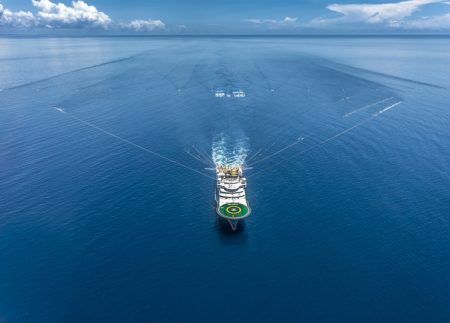PASSIVE ACOUSTIC MONITORING: A PROMISING TOOL WITH SOME DRAWBACKS
The default method for finding marine mammals at sea is visual detection. But this has obvious limitations at night and in poor weather. Moreover, some mammals make long dives, which means they’re hard to detect at the surface of the water.
Passive acoustic monitoring (PAM) helps detection by picking up the distinctive vocalisations that some species produce. It can greatly enhance the effectiveness of visual monitoring. But there are drawbacks.
Marine mammals vocalise in a wide variety of ways. Blue whales produce low-frequency moans (as low as 10Hz), which can be detected over tens of kilometres or more. But other mammals use higher frequencies that are detectable only over much shorter distances. Harbour porpoises, for example, echolocate with ultrasonic clicks (105–150 kHz) . Some mammals vocalise close to the surface, others only at depth. Some remain silent for long periods. PAM, therefore, works better with some species than others, and detection hardware and software that might be perfect for one species might not work at all for another.
TWO TYPES OF PAM
There are two ways of using PAM: towed and fixed. Towed systems use a hydrophone array pulled behind a boat, whereas fixed ones use hydrophones left on the seabed or attached to buoys on the sea surface. Fixed systems are used to collect data over a given area for extended periods of time, which is then analysed later. Towed systems, on the other hand, are used to collect data, which can be analysed as it is collected. Both types need further development and each has particular software requirements. Software that works for towed PAM may or may not be suitable for a fixed system. Although PAMGuard was originally developed for towed PAM, it is now used increasingly for looking at data from fixed systems as well.
The ability of a PAM system to pinpoint the exact whereabouts of an animal varies, depending on the type of sound. Measuring bearings to an animal is generally quite straightforward using two or more towed hydrophones. However larger and more sophisticated arrays can be used to improve range estimation for most species.
An interactive display which enables users to visualise sound at any frequency is essential to PAM.
-
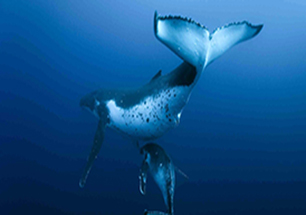
Pamguard Regulators
Passive acoustic monitoring (PAM) is a mitigation tool for the oil and gas industry to monitor and detect marine mammals
-
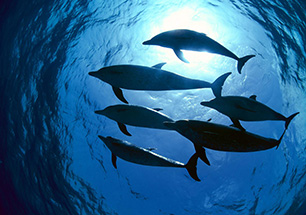
PAMGuard For Research
Passive acoustic monitoring (PAM) is a mitigation tool for the oil and gas industry to monitor and detect marine mammals
